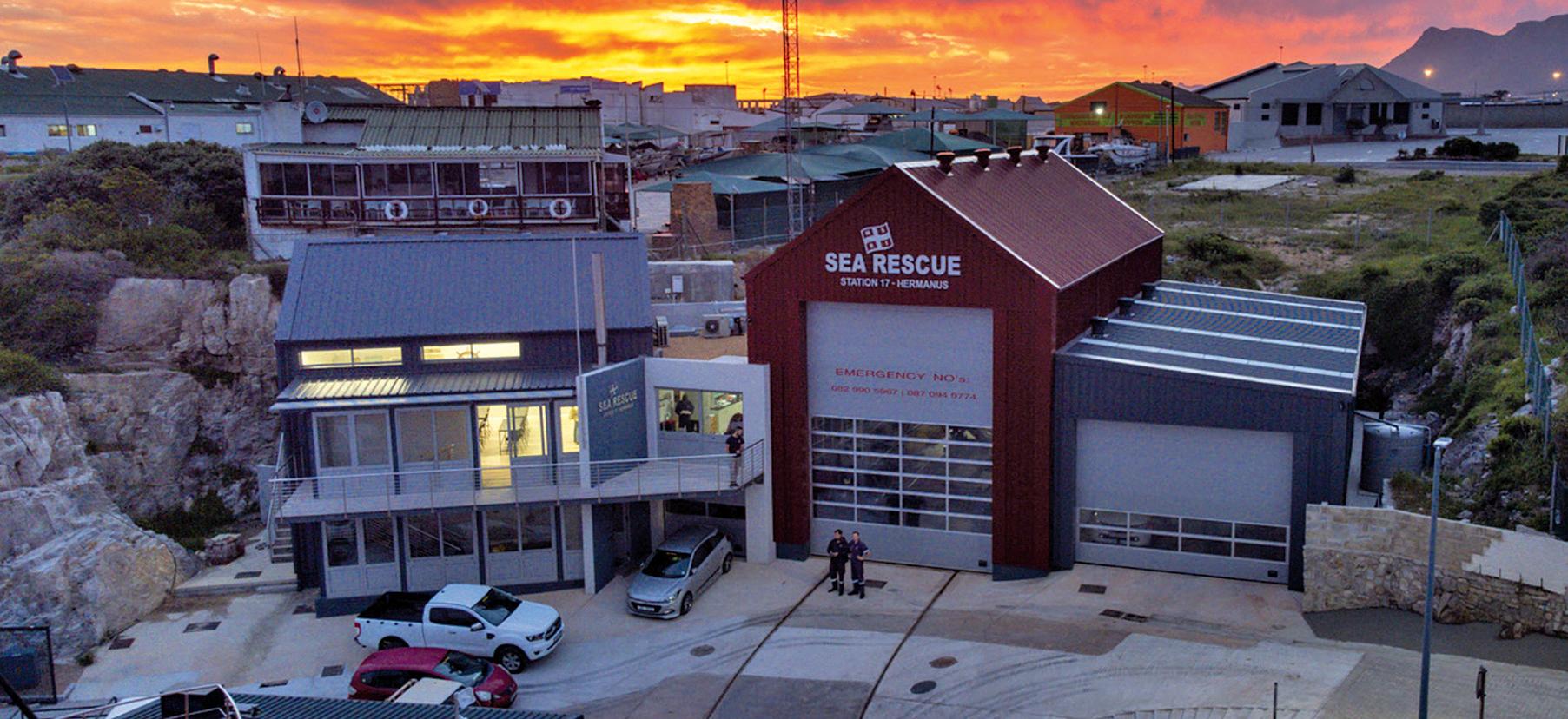
7 minute read
UPGRADE FOR HERMANUS
In anticipation of the arrival of its ORC, Station 17 (Hermanus) underwent an extensive upgrade. It was not without its challenges, says Cherelle Leong.
AT THE END of 2021 Station 17 (Hermanus) will take delivery of its new 14.8m deep-sea Offshore Rescue Craft (ORC). It will be the third in NSRI’s fleet and the first that is 100% South African-built.
It’s been a long haul to get to this point – not only in terms of the fundraising and boat build, but also because the Hermanus base had to be demolished and rebuilt in its entirety. Like many NSRI bases in SA, Hermanus had humble beginnings: it started out as a boat shed before being converted into a more permanent structure. The building was more than 40 years old, and rebuilding the base to accommodate the much larger ORC presented a number of unique challenges.
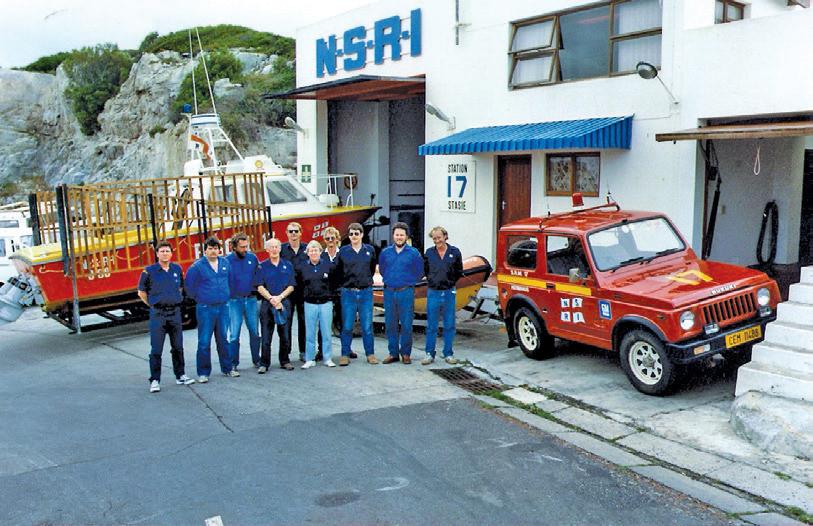
The Hermanus base is located against a cliff face below the local ski-boat club. Because it is inside a commercial harbour, it wasn’t possible to extend the base towards the water, as this would interfere with public access to the slipway located nearby. The only option was to carve out more of the cliff behind the base. This required extensive engineering and careful planning to ensure that the structural integrity of the ski-boat club above was not impacted during construction. Another challenge was diverting storm water run-off that would typically accumulate during heavy winter rains, as well as seepage water coming from the rock face behind the building. This water literally ran through the old building, and this had to be mitigated. To prevent water damage to the base, the rear of the building now has two double-brick walls with a draining cavity between them, and a deep gully at its base. The cavity is kept ventilated with extractor fans. The gully diverts water run-off around the building. Should any water manage to get through the outer wall, it will be drained via the cavity, and the extractor fans will maintain airflow and prevent moisture build-up over time.
It is standard for NSRI’s ORCs to be housed on a boat cradle. This rests on four metal wheels and launches on rails. At Hermanus the rails had to navigate a 25-degree S-bend at the top of the slipway to bypass the public maintenance slipway. The standard four-wheel cradle configuration doesn’t allow for turns and had to be modified with double bogeys that could turn, like a train carriage. In addition, an emergency brake was needed because the public also has access to the launching area. Known as ‘the elephant foot’, this is a large wooden block under each wheel set, that is hydraulically operated and drops down onto the rail, lifting the wheels up, and stopping the cradle within 1 metre when the emergency brake is activated.
Inside the base, it is spacious, with climate- controlled locker rooms where crew can change. While this may seem like a luxury, it’s been designed with crew comfort and wellbeing in mind and is already being put to good use. One night, while crew were returning from a long, cold callout on the 6.5m RIB, the controller turned on the heaters in the locker rooms. What a pleasure to be able to walk into a warm change room after hours of exposure on stormy seas!
Crew comfort and safety were strong factors in NSRI’s decision to upgrade the fleet of deep-sea rescue craft to ORCs over the coming years. NSRI is manned by trained volunteers who go out in all weather conditions and at any time of the day or night. Sometimes this involves crashing through rough weather for hours just to reach a casualty and then a long, slow tow to bring them back to safety. Operations like these are exhausting. Having a vessel like the ORC, which has pneumatic shock-mitigating seats and is designed to cut through heavy swell, greatly assists in crew endurance ensuring that when they arrive on scene they’re not already fatigued.
In addition, the cabin is soundproofed from the engine room, enabling better communication between crew and greater levels of comfort. The ORC is also equipped with state-of-the-art navigation and communication equipment that ensures more efficient rescue operations.
The ORCs come with a price tag of just over R20 million per vessel, and the builds would not have taken place without the generous donations of many sponsors. The ORC for Hermanus was funded in part by the Launch a Legacy campaign. This unique campaign enabled donors to honour a loved one for a donation of R2 000. The decals on the side of the cabin, carrying the vessel’s call sign RESCUE 17 will be printed with thousands of names nominated by donors. This means every time NSRI Hermanus launches, those loved ones are launching with the crew to save lives at sea. Among the donors are well-known public figures Siya Kolisi, Steven Kitshoff and Liezel van der Westhuizen. It’s an incredible legacy to be part of. An opportunity still exists for a major donor to secure the naming rights of the Hermanus ORC. Besides the fact that such a donation is taxdeductible, a sponsor gets the additional benefit of exposure – every time the vessel is involved in an operation during its 40-year lifespan, press releases will include its full sponsorship name.
The Hermanus crew are looking forward to receiving their new ORC and, in preparation, are conducting joint training sessions with the crew of Station 10 (Simon’s Town), who took delivery of their ORC earlier this year. These training sessions will involve navigating from Simon’s Town to Hermanus and back, alternating crews and coxswains from both stations. This will enable the crew to familiarise themselves with the configuration of the vessel, its navigation and communications equipment and its boat-handling capabilities. These joint training sessions are extremely beneficial, as learnings and experiences can be shared to better prepare crew members.
While the investments in upgrading the Hermanus base and building the new ORC are immense, they’re necessary to continue to provide an effective rescue service to local communities. As a non-profit organisation, NSRI is always mindful of spending funding wisely. Having rescue bases and vessels purpose-built with crew safety and wellbeing top of mind ensures that we can continue to save lives on South African waters. When a call for help comes, our volunteers can respond knowing they have the equipment, knowledge and rescue resources they need to bring everyone home safely.
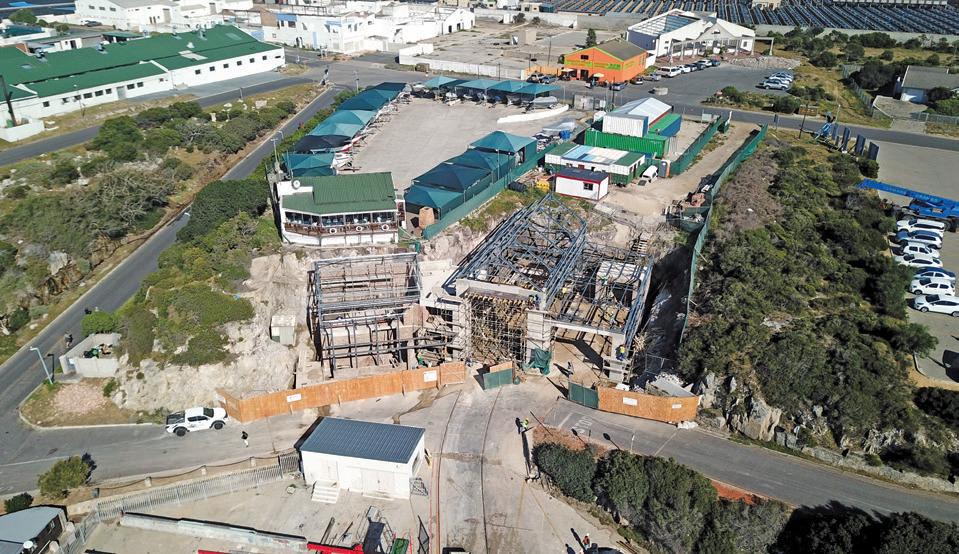
Aerial views of the construction process.
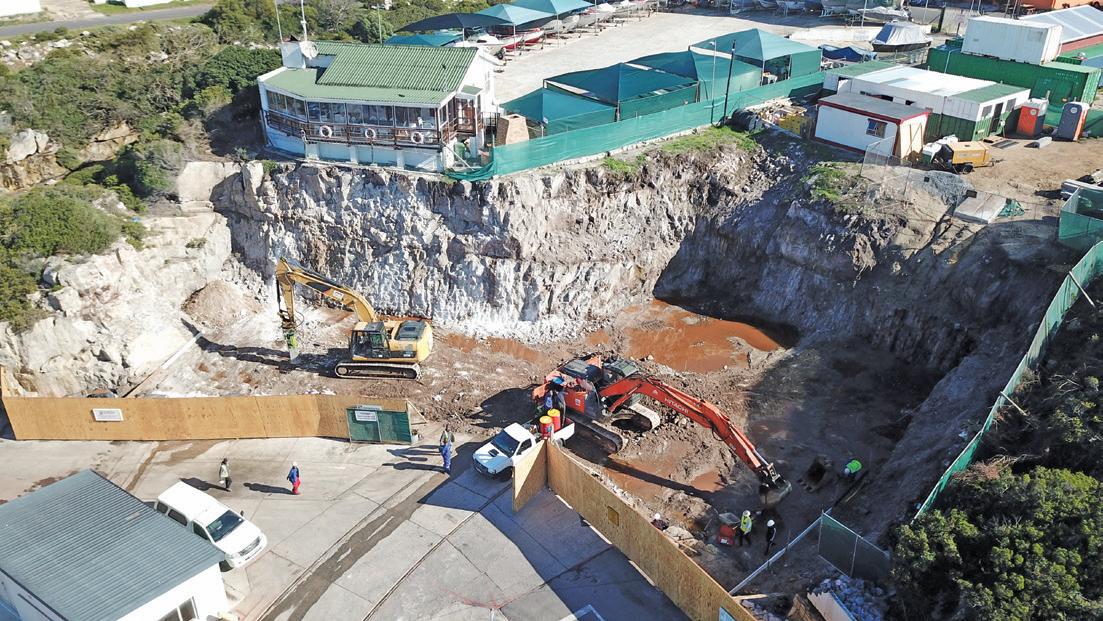
Aerial views of the construction process.
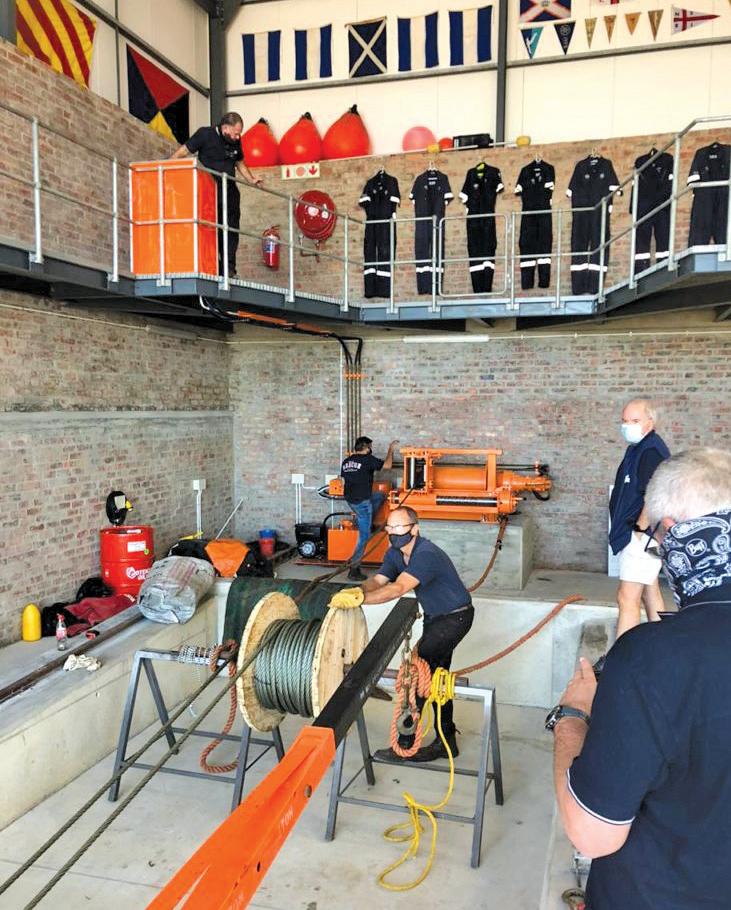
Heavy-duty wire rope is installed at the station.
Taking WATER SAFETY to rural areas
With the help of sponsors like South32, the NSRI is able to spread vital water safety messages to rural areas.
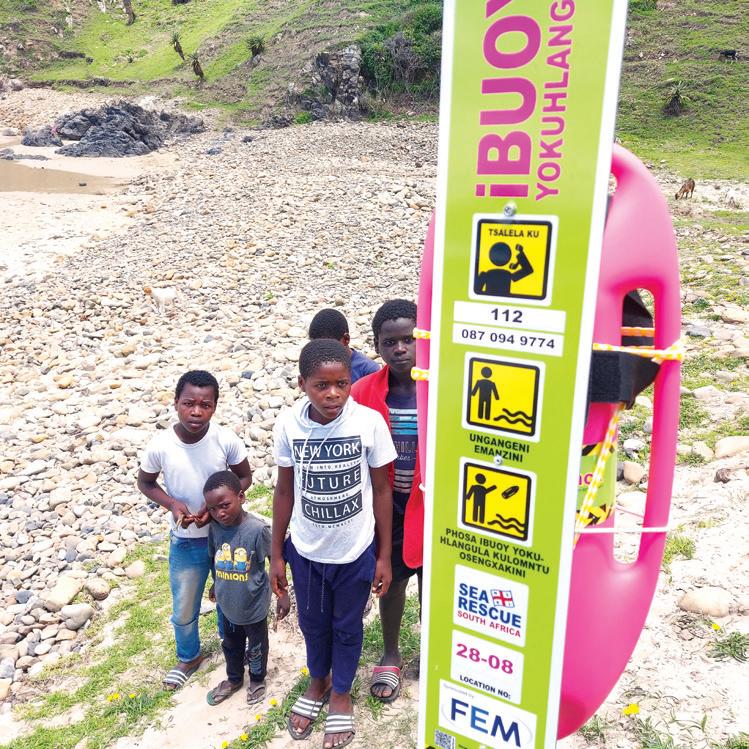
Delivering important watersafety education to schools and communities in rural areas can be a challenging exercise. This is largely due to the remoteness of certain locations, poor cellphone reception and compromised infrastructures. But, we’re making it work, thanks to the NSRI’s innovative ability, the determination of our water- safety educators and the sponsorships that support us. Our aim is to empower communities with the skills they need to keep themselves and each other safe, to share knowledge of basic rescue, first aid and how rip currents work.
AT THE COAL FACE
For more than a year the NSRI water safety teams in rural KZN and along the Eastern Cape’s Wild Coast have been working hard to reduce the drowning statistics in these areas. Leading the pack at the coal face is Port St Johns-based NSRI regional team leader Valerie Barlow who, with the use of an NSRI 4x4 vehicle, travels extensively in the area giving water safety and CPR lessons as well as teaching community members how to use and maintain the NSRI’s Pink Rescue Buoys.
MAKING HOT SPOTS SAFER
On the KZN coast, Richards Bay-based NSRI water safety instructor Mncedisi Hlalatu is following Valerie’s lead. With generous sponsorship from South32, Mncedisi and his colleague Ndumiso Sikhosana have been busy teaching children, adults and community leaders about basic water safety, how to do a safe peer rescue, how to use public rescue equipment (such as Pink Rescue Buoys), how to do bystander CPR and who to call for help in an emergency. Mncedisi, in his NSRI-branded, South32-sponsored 4x4, is also erecting Pink Rescue Buoys at drowning hotspots in the greater Richards Bay area.
We’re confident that the NSRI water safety teams will see a drop in fatal drowning statistics this season and hold their heads high in the knowledge that they’re doing a great job.










